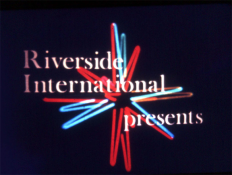These days I acquired at the local fleamarket a cine-camera which did not came to my attention before. A Elmo C200.
Concerning design and built it looked like a Double-8 camera, though it had zoom with lateral actuator and even motorized zoom.
What struck my curiosity was that it had exchangable film-magazines, or rather an exchangable magazine for Super-8.
Super-8 (and Single-8 too) is based on a cassette that can be exchanged in daylight. So, why constructing an exchangable magazine for such a cassette? Well, I answered that myself by assuming that Elmo had modified a Double-8 camera, that got an exchangable magazine for those 16mm reels, for Super-8.
The easiest way would be to design a magazine that takes the Super-8 cassette and add some modifications to the camera body too.
I was puzzled for a second time when I realized the other magazine took the Single-8 cassette.
So, why designing two different magazines, if one type would be sufficient? Well, I reasoned that it would be due to different markets where either of the two cassette-systems was prevailing.
But why had the previous owner got himself both types of magazines then? Well, why did I buy that camera with both cassettes...
Later I did some searching on the net. And an advertisement turned up which put emphasis just on that fact that one could interchange between Super- and Single-8. And I also found a review that hinted at the fact that both systems add up to each other by offering film types the other system lacked.
Thus that camera may have been designed that way from the start.
The magazines are very complex. The drive of the take-up spools is accomplished by two cogwheels on the body protruding into the resp. magazine. The film speed is transduced from the cassettes into electrical signal and transferred to the body, which got 4 contacts for that. The day-/artificial-light indication is taken by the body directly from the Super-8 cassette. Furthermore there is a mechanical contact between magazines and body, the function of which remains unclear to me. A lot of mechanics anyway.
There is even a twin model, that in addition takes magazines for Double-8 and even 30m of Double-Super-8.
This requires a quite complex film-stage, with retractable film-guides for the 8mm wide films and variable image windows, and of course different film transport.
Whereas the last two alternatives do make sense, the interchangability between Super-8 and Single-8, aside of the film offer, does not make sense to me.
Can anyone enlighten me on this matter?
Concerning design and built it looked like a Double-8 camera, though it had zoom with lateral actuator and even motorized zoom.
What struck my curiosity was that it had exchangable film-magazines, or rather an exchangable magazine for Super-8.
Super-8 (and Single-8 too) is based on a cassette that can be exchanged in daylight. So, why constructing an exchangable magazine for such a cassette? Well, I answered that myself by assuming that Elmo had modified a Double-8 camera, that got an exchangable magazine for those 16mm reels, for Super-8.
The easiest way would be to design a magazine that takes the Super-8 cassette and add some modifications to the camera body too.
I was puzzled for a second time when I realized the other magazine took the Single-8 cassette.
So, why designing two different magazines, if one type would be sufficient? Well, I reasoned that it would be due to different markets where either of the two cassette-systems was prevailing.
But why had the previous owner got himself both types of magazines then? Well, why did I buy that camera with both cassettes...
Later I did some searching on the net. And an advertisement turned up which put emphasis just on that fact that one could interchange between Super- and Single-8. And I also found a review that hinted at the fact that both systems add up to each other by offering film types the other system lacked.
Thus that camera may have been designed that way from the start.
The magazines are very complex. The drive of the take-up spools is accomplished by two cogwheels on the body protruding into the resp. magazine. The film speed is transduced from the cassettes into electrical signal and transferred to the body, which got 4 contacts for that. The day-/artificial-light indication is taken by the body directly from the Super-8 cassette. Furthermore there is a mechanical contact between magazines and body, the function of which remains unclear to me. A lot of mechanics anyway.
There is even a twin model, that in addition takes magazines for Double-8 and even 30m of Double-Super-8.
This requires a quite complex film-stage, with retractable film-guides for the 8mm wide films and variable image windows, and of course different film transport.
Whereas the last two alternatives do make sense, the interchangability between Super-8 and Single-8, aside of the film offer, does not make sense to me.
Can anyone enlighten me on this matter?













